A Modern Dr. Frankenstein is Going to Transplant a Human Head... Using VR, and is Aiming for Immortality!
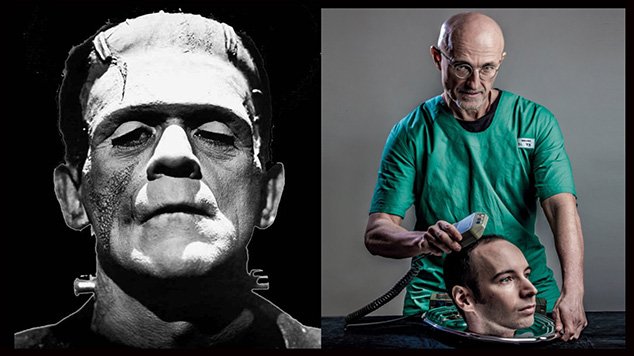
Do you think reattaching a head to a body is only in sci-fi? Think again! The modern Dr. Frankenstein is an Italian neurosurgeon named Sergio Canavero.
This all started with trying to heal spinal paralysis. And now, it's progressed to Frankensteinian head transplants and electricity!

Canavero and his team are now working to develop a successful method to cut and reattach the spinal cord for an upcoming human head transplant. This type of procedure has been done with success in rats and a dog recently. 90% of the dog's spinal cord had been severed then re-attached. Other researchers are skeptical, and require more testing to be done to confirm the results.
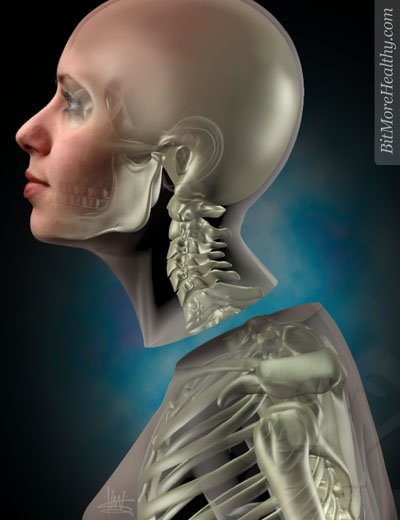
At the recent Glasgow Neuro Conference, Canavero announced some new breakthrough technology for his upcoming procedure on a human. Farid Amirouche, professor of mechanical engineering and bioengineering, develop anew state-of-the-art "diamond cutting blade, with a retractable and adjustable nerve holder, a rotating head and reflective lights." Holy whipper snapper! Now that's a blade...
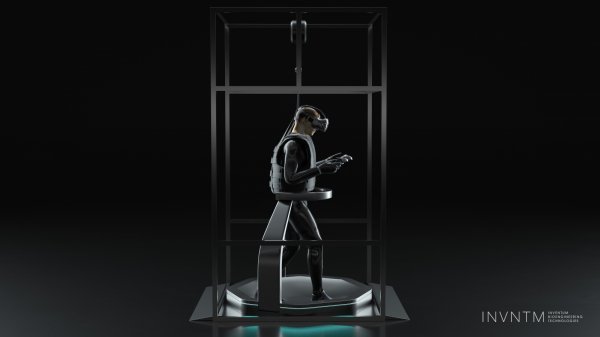
This surgery will involve a new feature: VR.
But no, it's not the doctor using it, it's the patient in this case. It is required for psychological and neurological training to prepare the recipient to use a walking body again.
"The patient will engage in virtual reality training several months before the commencement of the procedure in order to sufficiently prepare for the normalcy of life in a new body."
Talk about sci-fi... virtual reality and reattaching body parts... what a mix!
Here is Canavero presenting his ideas and plans for surgery at TEDx.
He mentions four eye-opening key points to making his surgery a success:
- A blade using less than 10 newtons of force.
- Movement is from the spinal chord, directed by the brain, requiring electricity for stimulation, and they can make paraplegic people walk with electric stimulus.
- Only 10-20% of nerve fibers in spinal cord are needed for motor function.
- A secondary motor highway of short range fibers exists, and can regenerate their extensions more quickly. Using the second point of electrical stimulation can make them regrow quicker.
- PEG (polyethylene glycol) can reconstitute damaged biomembranes.
PEG has already been used to restore movement to paralyzed rats.
Head transplants are just the beginning for Canavero.
So his first goal was for:
- transplanting healthy heads from sick bodies, onto healthy brain-dead donor bodies
But... he sees more ahead with this technology. He goes on to add his wider long term plans that will potentially change the lives of everyone forever...
- cybernetic immortality
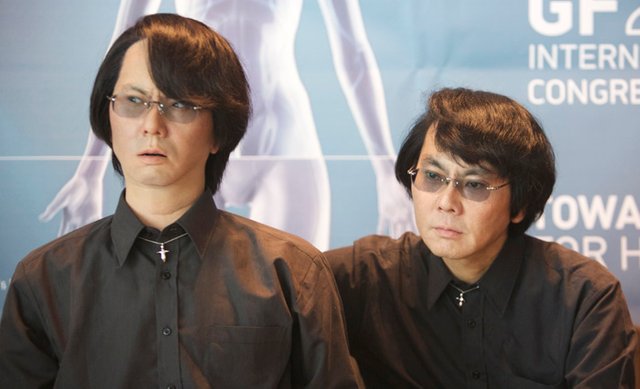
He's part of the [2045 Initiative(http://2045.com/) to get a cybernetic brain hookup to a virtual reality.
Here is a roadmap of some of the milestones the project hopes to achieve:
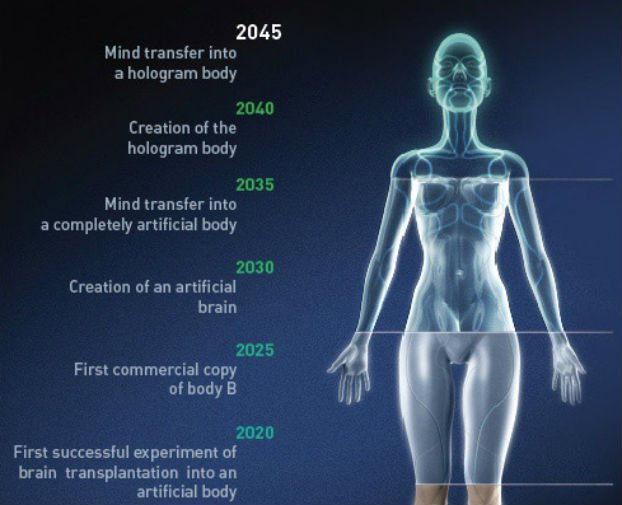
Canavero also emphasizes the importance of transferring blood from the young to the old, as I talked about in a recent post earlier today, of course from willing donors.
He sees us all getting new young lives, with another 40 years to live, at the cost of 10 million Euros... LOL.
He also hopes to use his quick re-attachment to "prove" consciousness survives after death. I have another understanding that could be tested. Wait 1 day to re-attach a head, after the electrical impulses in the brain will die off, and see if you can "re-connect" a consciousness to a new body with the old brain. Something tells me it won't work. It's electro-brain dependent. Once the charge goes out, bye bye.
The future sure is going to be interesting... I hope we don't mess it up too bad :)
@krnel
2016-11-21, 7:25pm
I hope indeed that we will not screw the future up :)
This post has been ranked within the top 25 most undervalued posts in the first half of Nov 22. We estimate that this post is undervalued by $8.26 as compared to a scenario in which every voter had an equal say.
See the full rankings and details in The Daily Tribune: Nov 22 - Part I. You can also read about some of our methodology, data analysis and technical details in our initial post.
If you are the author and would prefer not to receive these comments, simply reply "Stop" to this comment.